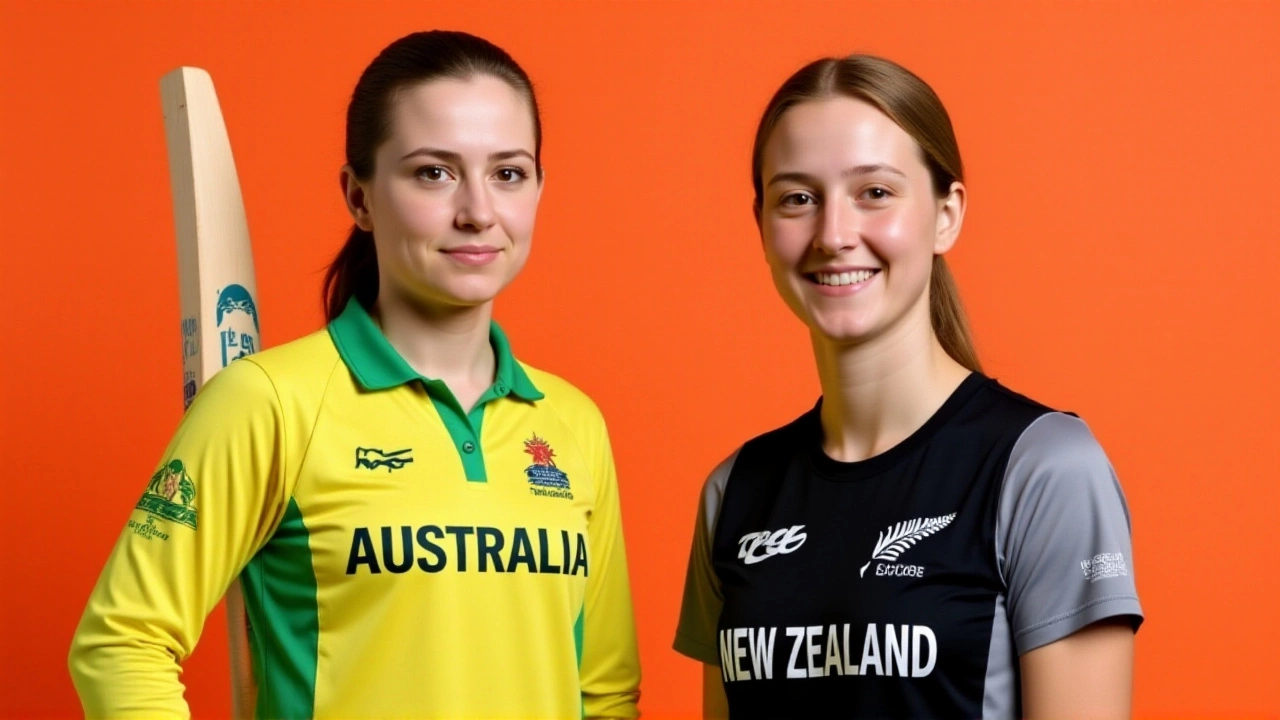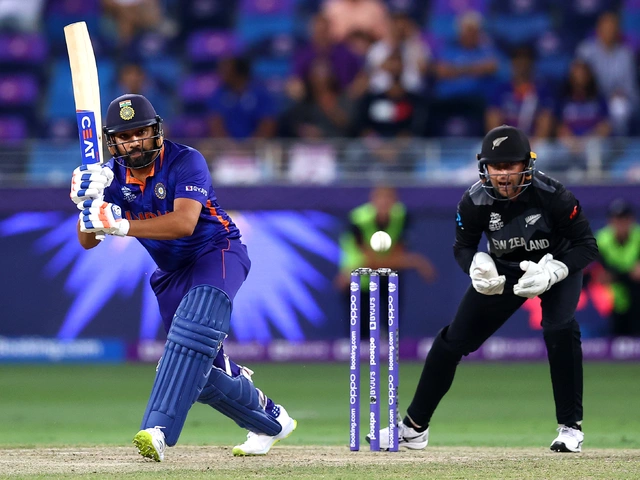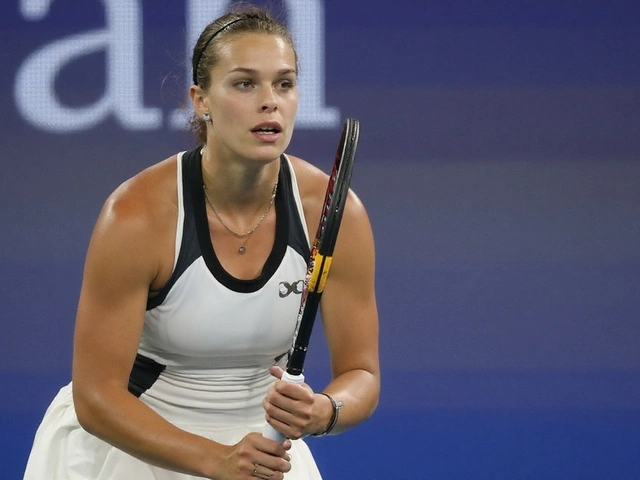In a clash that thrilled the stands at the Holkar Cricket Stadium, Australia Women posted a commanding 326‑run total against New Zealand Women on October 1, 2025, securing an 89‑run victory in the second match of the ICC Women’s ODI World Cup 2025Indore. The result not only gives the defending champions a perfect start but also reinforces their dominance in the eight‑team tournament where the top four advance to the semifinals.
Match overview and key moments
Australia’s captain Alyssa Healy, wicket‑keeper and opener won the toss and elected to bat at 3:00 PM IST. An early partnership between Healy (33) and Phoebe Litchfield set a positive tone, but a dramatic collapse to 128‑5 threatened to derail the innings. Here’s the thing: the middle order rallied, anchored by a blistering Ashleigh Gardner who smashed 115 off just 83 balls, including 12 fours and 7 sixes.
Gardner’s century turned the tide. She chased the target beyond 200 with a flurry of boundaries, and the lower order added valuable runs – Tahlia McGrath contributed a quick‑fire 34, while Kim Garth chipped in 22*. The final score: 326/7 in 50 overs.
Batting heroics: Gardner and Devine
Gardner’s 115 was the match‑winning performance, but she wasn’t alone. Ellyse Perry added a steady 56, and Beth Mooney contributed 41. The partnership between Gardner and Mooney (84 runs) steadied the ship after the early wobble.
New Zealand’s chase was anchored by captain Sophie Devine, who smashed a ninth ODI century – 111 off 95 balls. Her knock featured 9 fours and 5 sixes and brought the Kiwi side back within striking distance at 200/3. Yet, Australia’s bowlers tightened the screws.
Bowling breakdown: Molineux and Sutherland shine
Australia’s attack was clinical. Sophie Molineux ripped through the middle order, claiming 3 / 25 in 9 overs, while Annabel Sutherland added 3 / 26 in 10 overs. Their disciplined lines forced New Zealand into a scramble after Devine’s dismissal at 230/6.
On the other side, Lea Tahuhu was New Zealand’s best bowler, ending with 3 / 42, but the support from Maddy Green (2 / 38) wasn’t enough to stem the flow.
Team strategies and line‑ups
Australia’s probable XI featured a blend of experience and youth: Healy, Litchfield, Perry, Mooney, Gardner, McGrath, Wareham, Sutherland, Alana King, Kim Garth, and Megan Schutt. Notably, fast‑bowler Darcie Brown earned a spot ahead of Schutt, signalling a strategic shift towards pace.
New Zealand fielded a side anchored by Devine, Suzie Bates, Amelia Kerr, and a pace attack of Tahuhu, Jess Kerr, and the emerging Eden Carson. The Kiwi side’s depth was apparent, yet the lack of a second genuine all‑rounder undercut their chase.

Implications for the tournament
With two wins out of two, Australia sits atop Group A, already guaranteeing a place in the top‑four. Their net‑run‑rate (+1.75) dwarfs the next best, meaning even a slip‑up in the next match won’t jeopardise qualification.
New Zealand, meanwhile, sit with a single loss. They must win their remaining group games and hope the other results go their way to stay alive. The win also hurts New Zealand’s confidence – they’re now 0‑2 against Australia in this World Cup edition.
Historical context
Australia’s dominance over New Zealand in women’s ODIs is well‑documented: out of 147 encounters, the Aussies have triumphed 107 times, while the Kiwis have managed 37 wins and three no‑results. The 89‑run margin is the fifth‑largest ever in a Women’s World Cup match, eclipsing the 83‑run win over England in 2017.
Gardner’s century marks the 12th hundred in this tournament so far, and Devine’s 111 pushes her career tally to 6,000 runs in ODIs – a milestone she reached with a grin, according to post‑match interviews.
Key facts
- Australia 326/7 (50 overs) – highest total of the tournament to date.
- New Zealand 237 all out (43.2 overs).
- Top scorer: Ashleigh Gardner 115 (83 balls).
- Best bowling: Sophie Molineux 3/25, Annabel Sutherland 3/26.
- Man of the match: Ashleigh Gardner.
Frequently Asked Questions
How does this win affect Australia’s chances of winning the World Cup?
The victory puts Australia at the top of Group A with a perfect record, guaranteeing a semifinal berth regardless of the next match’s result. Their superior net‑run‑rate also means they’ll avoid facing the tournament’s second‑seeded side until the final.
What were the standout performances for New Zealand?
Sophie Devine’s 111 runs was the highlight, marking her ninth ODI century. Additionally, bowler Lea Tahuhu’s 3/42 provided the only real threat to Australia’s batting lineup, keeping the match competitive until the final overs.
Why did Australia choose to play Darcie Brown over Megan Schutt?
Coach Matthew Mott wanted an extra pace option on the sub‑continental pitch, believing Brown’s right‑arm speed would exploit any early‑morning moisture. The decision paid off as Brown delivered three crucial overs in the middle spell.
What does this result mean for New Zealand’s path forward?
New Zealand now must win all remaining group matches and hope other results favor them. A loss would likely eliminate them, as the top‑four spots are already contested by Australia, India, and England.
How does this match compare historically to past World Cup encounters?
The 89‑run margin is one of the largest victories in Women’s World Cup history and underscores Australia’s continued supremacy over New Zealand, a trend that dates back to the 1970s when the Aussies first began to dominate the bilateral series.





